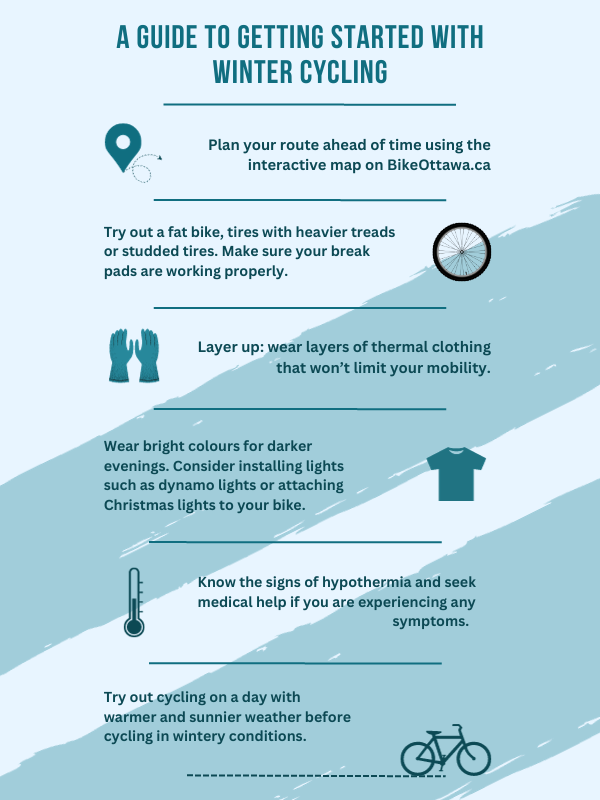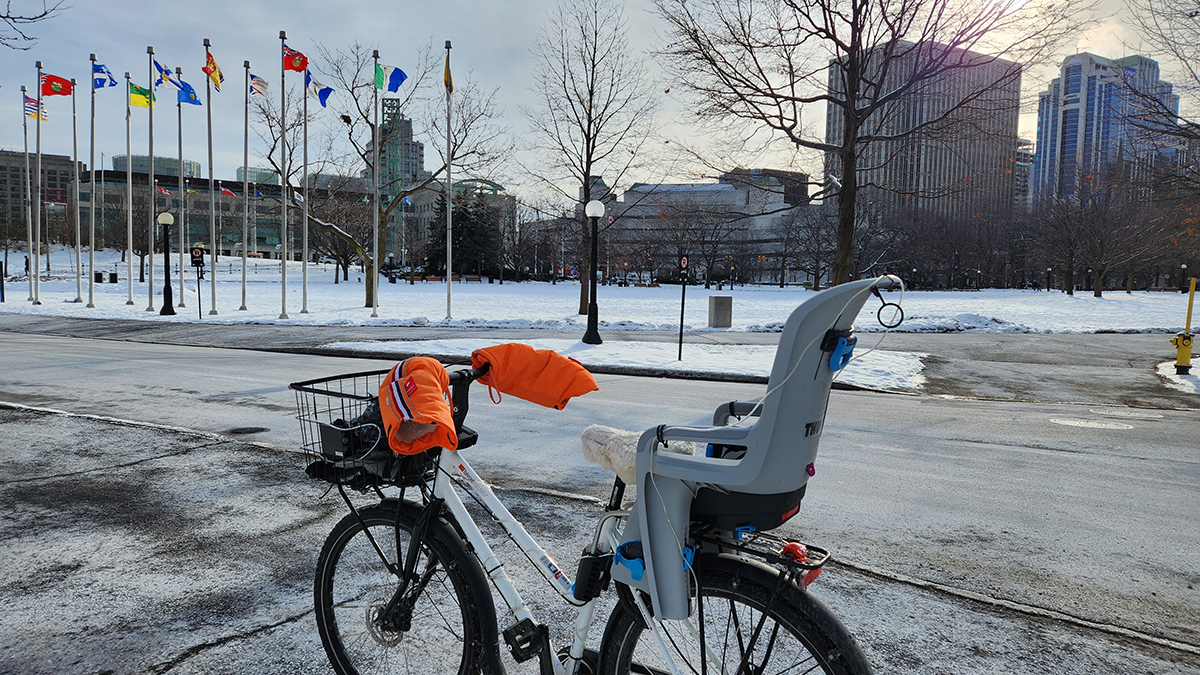Whether it’s to reduce carbon emissions or avoid expensive gas, more and more Ottawans are adopting winter cycling. However, the impact of climate change on roads is adding an extra layer of risk for travellers on two wheels.
Even as cycling experts point to a “noticeable increase” in the number of winter bicyclists over the last decade, warmer winters have introduced freeze-thaw cycles that create slippery conditions and more potholes on roads and bike lanes.
Cycling enthusiasts hope these additional hazards will spur the city to start paying more attention to the infrastructure available for bicyclists.
Brandon Chin Quee, a bike mechanic at Tall Tree Cycles, said there has been a 20-per-cent increase in customers at the bike shop since the start of last winter. Felicity Borgal, sustainable transportation team lead at EnviroCentre, added more people are reaching out to the environmental non-profit with questions about it too.

The organization is hosting a workshop at Carleton University on Oct. 19 to offer resources for those interested in winter cycling. Topics will include tips on planning bike routes, of which there are almost 50 kilometres across Ottawa, according to Bike Ottawa’s interactive map.
Borgal said some of the reasons people are turning to winter cycling include concerns about transit reliability and the rising cost of living.
“Financially speaking, obviously you’re not spending money on gas, you’re not spending money on parking,” she said. “On days when the weather is worse and more people drive, the bike is the most reliable of the vehicles available to you because there’s no one blocking the bike lanes — you just fly past lines of cars.”
The search for sustainable forms of transportation may also be driving the increase in cyclists on the road, she said.
There has been a 1.9 C average increase in temperature in Canada since 1948, according to Environment and Climate Change Canada. While warmer winters may indicate more manageable temperatures, Borgal said this may increase the presence of unstable road conditions.
“Those warmer winters in Ottawa tend to be freeze-thaw, and that means you still get a large number of potholes. There’s lots of ice [and] it’s bumpy ice, which is really hard to deal with and it’s hard to bike on,” she said. “And then of course a lot of our routes are along our waterways, which means that they flood in the spring.”
Cameron Roberts, a researcher in climate policy and public transit, said potholes may threaten cyclist safety.
“If there’s a pothole in your way, suddenly you have to swerve around it — if there’s a car coming from behind, [you] can easily get hit,” he said. “The safe thing for a cyclist to do on a road with a lot of potholes is take the lane right in the middle and not allow traffic to pass, but that makes motorists angry.”
Roberts said the city needs to pay more attention to road infrastructure for cyclists.
“It’s often an excuse against good cycling infrastructure in Canada that we have winter, and it’s not actually a very good excuse,” he said. “There’s a lot of other countries that have winter conditions where people bike all year round. People are willing to go out into the cold in the winter to hike, snowshoe, ski and play hockey. There’s no reason why they wouldn’t also ride a bike if that’s what gets them to work.”
For recreational winter cyclist Dave Houghton, icier routes have led him to purchase studs, which are small metal spikes, for his tires.
Despite having to make minor adaptations to his equipment, Houghton said cycling continues to be a fun winter activity to get around and stay active.
“Winter’s a long time in Ottawa — why not find things that you like to do and make the winter fun?”
Borgal said more cyclists on the road creates a “self-fulfilling cycle” where there is more pressure to maintain bike routes year-round due to increased demand.
“The more routes we have available to people, the more people will be able to make the choice to do a more environmentally friendly commute because it will be easier for them and safer for them,” she said.




